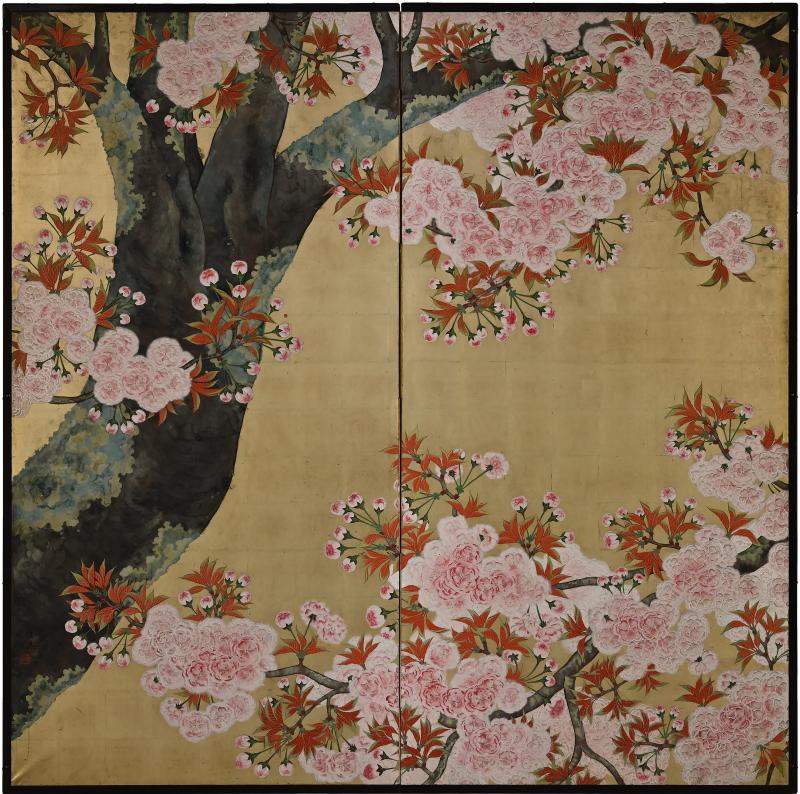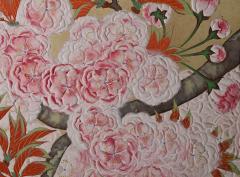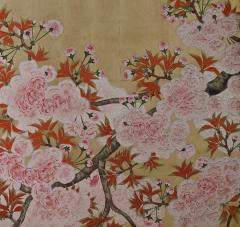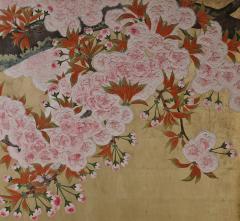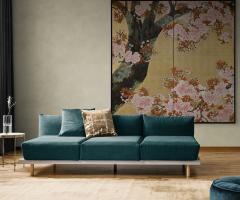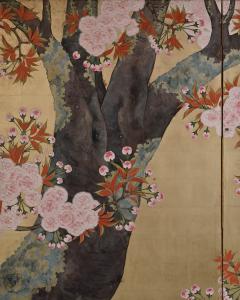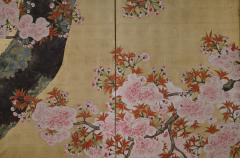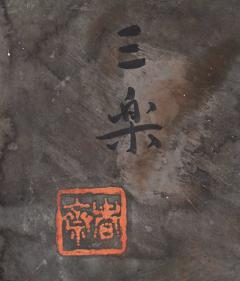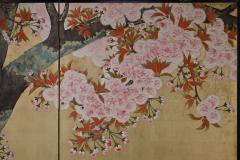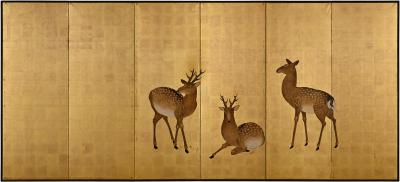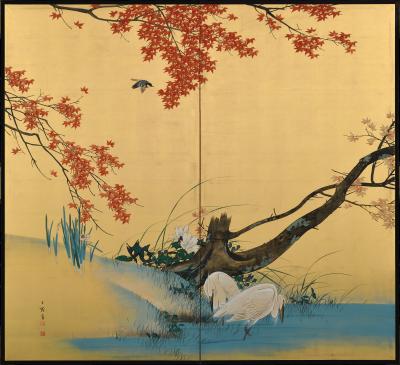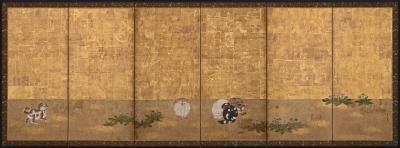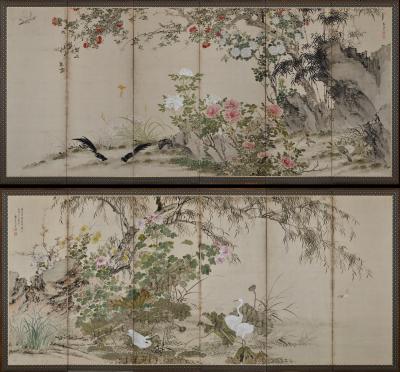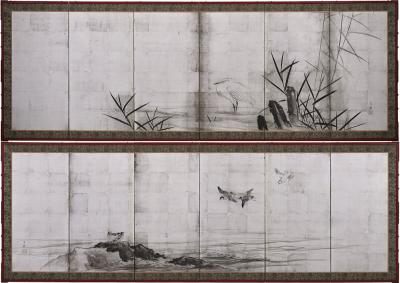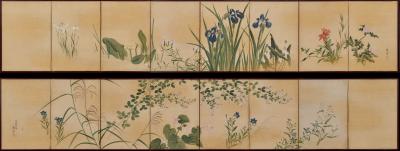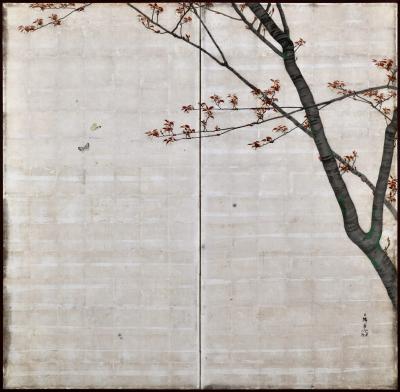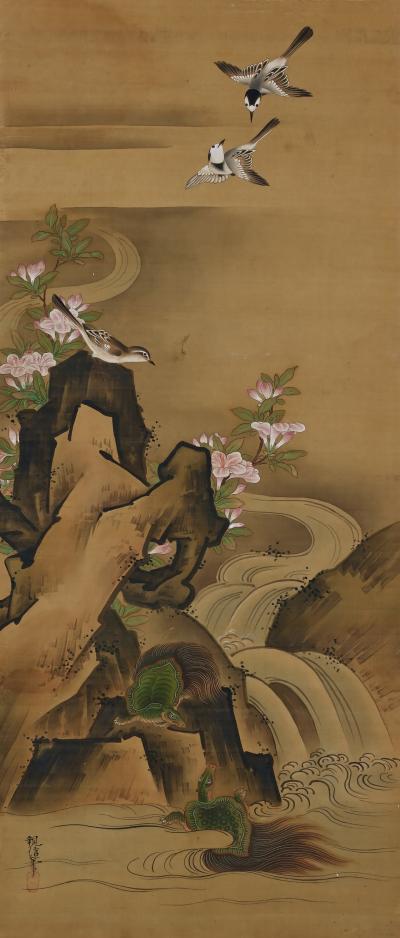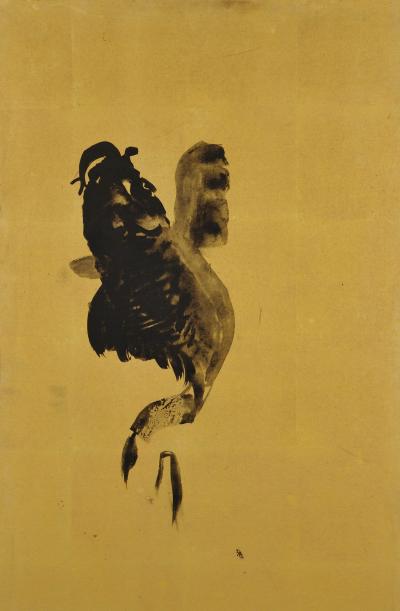Listings / Fine Art / Paintings / Still Life
Early 20th Century Japanese Cherry Blossom Screen
-
Description
Cherry Blossoms
Kano Sanrakuki (1898-1981)
Showa period, circa 1930
2-panel Japanese Screen
Color, gofun and gold leaf on paper
Dimensions:
H. 186 cm x W. 186 cm (73’’ x 73”)
Price: USD 22,000
Against a backdrop of gold-leafed ground, the lichen covered trunk and branches of the life-sized cherry blossom tree reach out and beyond the confines of the pictorial surface. The overall composition has a feeling of flatness which draws emphasis to the surface and the three-dimensionality of the cherry blossoms. Painstakingly built-up layers of thickly applied shell-white gofun detail the voluminous blossoms and cover large areas of this tour-de-force of Japanese Nihonga painting. By simplifying the background, minimizing the number of colors and depicting the blossoms with such heavy relief, the artist has emphasized the stunning presence of the cherry tree. The type of tree depicted is the Yae-Zakura; a double-layered type of cherry blossom famed for its beauty and strength. When we think of Japanese cherry blossoms, the first thing that comes to mind is Somei Yoshino variety, which has a single flower with five almost white petals. This type is fragile and easily blown away by strong wind or rain. Most of the double-flowered cherry blossoms begin to bloom when the Somei-Yoshino falls, and the flowering period lasts longer than that of the Somei-Yoshino.
Kano Sanrakuki originally studied painting at the Kyoto City Arts and Crafts School under the tutelage of Yamamoto Shunkyo. In 1919 he moved to Tokyo and became a disciple of Yamamura Koka (1885-1942). Koka studied Nihonga (Japanese painting) and frequently exhibited at the Inten. Sanrakuki was first selected to exhibit with the Inten in 1928. Three years later he became a disciple of the Nihonga painter Kawabata Ryushi. He joined the Seiryusha painting group, which consisted of Ryushi’s disciples. He won prizes with his exhibited works of 1931, 32 and 33. His 1934 exhibition work was highly acclaimed both within the group and with the public and increased his reputation significantly. From that moment he joined Sakaguchi Isso as one of the two top rated disciples of Kawabata Ryushi. -
More Information
Documentation: Signed Period: 1920-1949 Creation Date: 1930 Styles / Movements: Asian Art Incollect Reference #: 721394 -
Dimensions
W. 73.23 in; H. 73.23 in; W. 186 cm; H. 186 cm;
Message from Seller:
Kristan Hauge Japanese Art, based in Kyoto's museum district since 1999, specializes in important Japanese screens and paintings for collectors, decorators, and museums worldwide. Contact us at khauge@mx.bw.dream.jp or +81 75-751-5070 for exceptional access to Japanese art and history.















